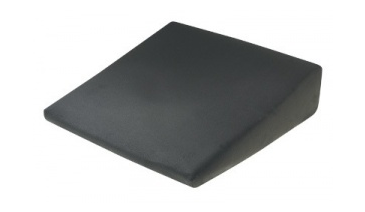A wedge cushion consists of two inclined planes, giving it a thin end and thick end. It is a simple device that changes the direction of force laterally and wedges have been used since the stone ages to split objects apart. A larger form of a wedge – a ramp – is used to raise heavy objects such as stone blocks when building. Pushing the object along the surface of the wedge/ramp, from the thin edge toward the thick edge, caused the object to rise vertically.
Wedges, made of foam, allow physiotherapists to support or position the patient or a body part during therapy or even for longer periods, or to obtain a stretch so as to increase joint mobility. It’s most common use is for comfort in sitting, with the thicker edge under the buttocks to raise the hips higher than the knees.
The history of the use of the wedge in physiotherapy is unknown.
Description provided by Rehan Hall of South Africa and Glenn Ruscoe of Australia.

